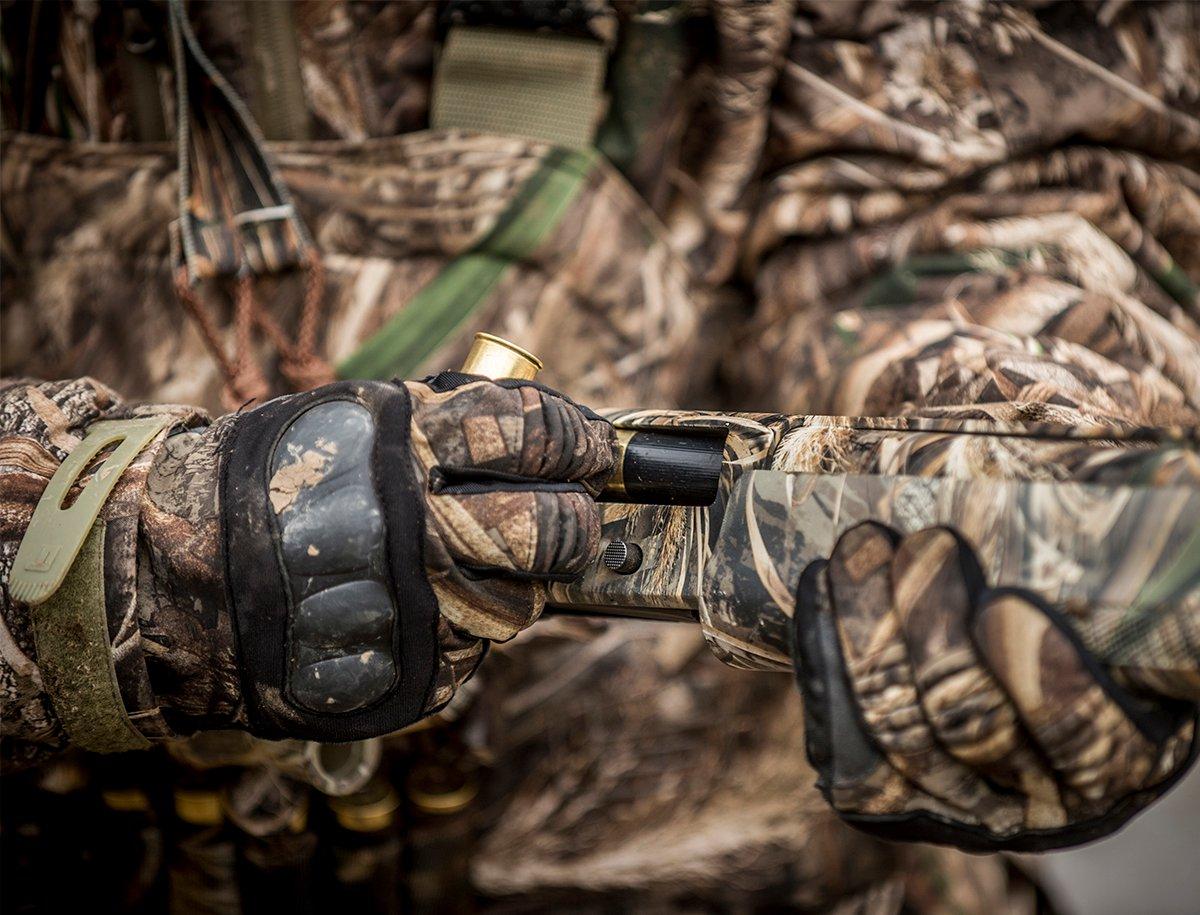Independent Testing Reveals Some Surprising (and Practical) Info
Most modern waterfowl loads push a 3-inch magnum load of 1-1/8 or 1-¼ ounce of shot somewhere in the neighborhood of 1,400 feet per second, give or take 50 fps.
A few companies push loads faster, with some reaching a blistering 1,700 fps. Man, that is fast, but what does speed translate into for real-world waterfowling? If you adhere to the laws of physics and not the law of hearsay or conjecture, the answer is not very much downrange. How can this be? I can see the hate mail coming in now.
Well, here are the facts. A round ball is, by design, poorly constructed for aerodynamic flight. Unlike an arrow or elongated, pointed rifle bullet, a shotgun pellet traveling at hyper velocity actually slows down faster than a pellet traveling at a slightly slower velocity. This is because the faster a pellet is flying, the more air resistance in front of the ball. It's science. Trust me. If you don't believe me, consult those old college textbooks, or remember that Google is your friend.
So, why the hype in fast shotgun shells? How fast is too fast? How far can I shoot a duck or goose? I took eight of the most popular waterfowl shotgun shells and put them head to head in a blind test to see how they stack up.
The Testing
For testing, I used 3-inch magnum shells from various manufacturers ranging from $14 to $26 per box. Some folks might ask why I used only 3-inch magnums. Because I did the shooting myself and paid for the shells myself to keep the playing field level and free of influence, 3-inch magnums were more economical and far more comfortable to shoot out of my Browning Cynergy double-gun. I chose the Cynergy for two reasons, the first being I could use two choke tubes with the gun for testing. Also, I wanted to get a good feel for recoil as the speeds and payloads changed. For chokes, I varied between factory modified, improved-cylinder and light-modified, and three chokes from custom choke manufacturers that were custom-made for the shell I was shooting at the time. Without disclosing the choke/shell combo, only one combo seemed to make a difference — and the difference was substantial. This, I surmised from talking to that company's representative, is because of the uniqueness of its proprietary shot cup/wad design, which requires a more open choke without porting. That said, when I used that load in a more constrictive choke (conventional wisdom being a tighter choke, a tighter pattern), the pattern was so inconsistent at 30 yards that two geese and a flock of teal could fly though it and not lose a feather. Aside from that stand-alone shell, most of the other brands patterned the most consistently at practical ranges with a Light Modified Carlson Sporting Clays choke.
In random testing, the payloads were very consistent, although the less expensive shells had some discrepancies in the amount of buffer. Chronographed at 10 feet from the muzzle, velocities were within an acceptable range of the stated velocity printed on the box. Those speeds were based off a three-shot average. For paper testing, I patterned each load in my gun and chose the choke tube that patterned the best with each load to give each shell its best shot in the test (pun totally intended).
Penetration was measured during patterning using gelatin and wet paper behind a paper target. Granted, that's not the most scientific form of testing, so instead of using the percentage of the pattern within the 40-inch circle and inches of penetration, I used an L for lethal and an N for non-lethal, because some moderate inconsistencies were present. This was for simplicity and so I did not weigh down readers with too many numbers.
Chart Key
L: lethal penetration
N: non-lethal penetration
C: consistent pattern showing uniformity and few to no holes
B: open pattern, several holes, very inconsistent
N/A: very few shot on target, maximum range surpassed
As you can see from the chart, all but one of the shotshells created enough penetration and pattern consistency to 40 yards. However, the pack started falling off when stretched to 50 yards. Most of the less expensive shells fared poorly, except one load from brand A that held its own with even the most expensive loads. Beyond 50 yards, only one shell performed well enough to consistently make clean kills in four out of five tests in pattern and lethal penetration.
The thing that stood out was the recoil of the 1,700 fps load. I forced myself not to flinch after four rounds from a bench with the shotgun sitting on a sandbag rest. Granted, I used a double-gun, and the recoil will be softened some with a gas semi-automatic. That said, I would hate to feel that load in a 3-½-inch.
For those who argue ultra-fast shells will help cut the amount of lead needed to get on target, my answer is this: The speed to which the faster shot slows at 40 yards (dropping to roughly the same speed as conventional waterfowl loads because of the aforementioned physics mumbo jumbo) 0ifies the theory of decreased lead at that distance and beyond. Using decreased leads at less than 40 yards is a matter of contention, as how much does 200 fps or slightly less really matter in real-world hunting situations?
So, what is the takeaway? Shoot a lot of shell/shot/choke combinations, and find the setup that works best for your gun. Next, visit the sporting clays range, and practice with the gun you're going to take to the blind. Don't buy into all the hype contrived by forums, glossy ads and social media starlets who shot their first coot last season. Experience kills, not speed.
Click here for more Realtree waterfowl hunting content. And check us out on Facebook.








